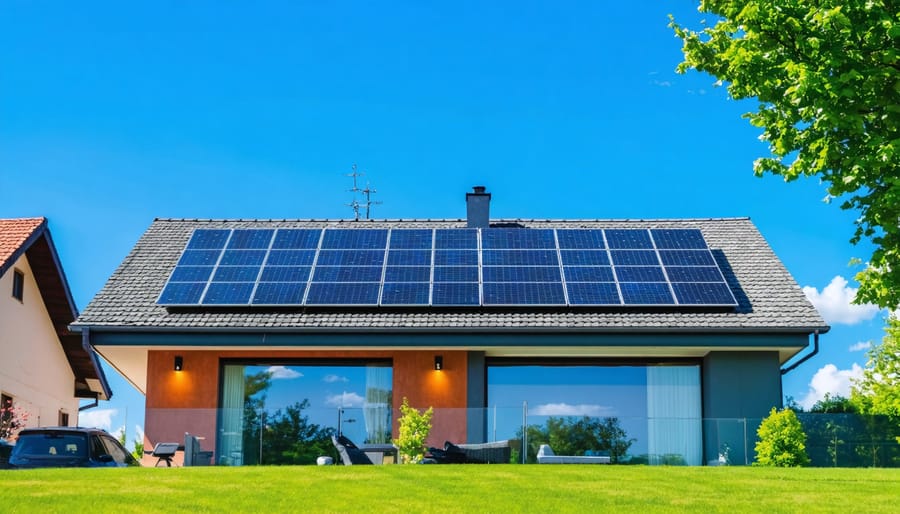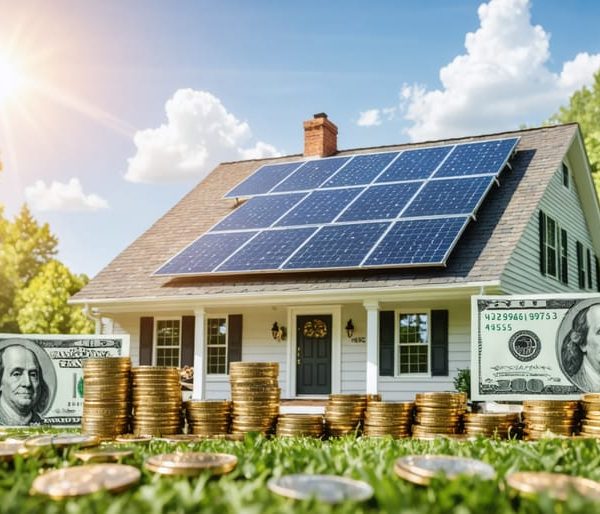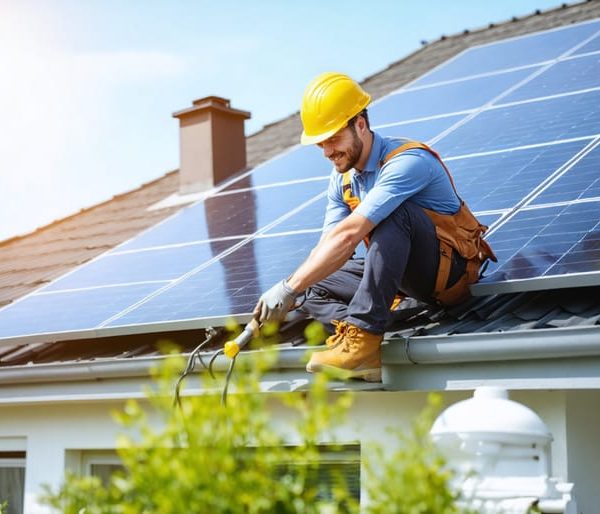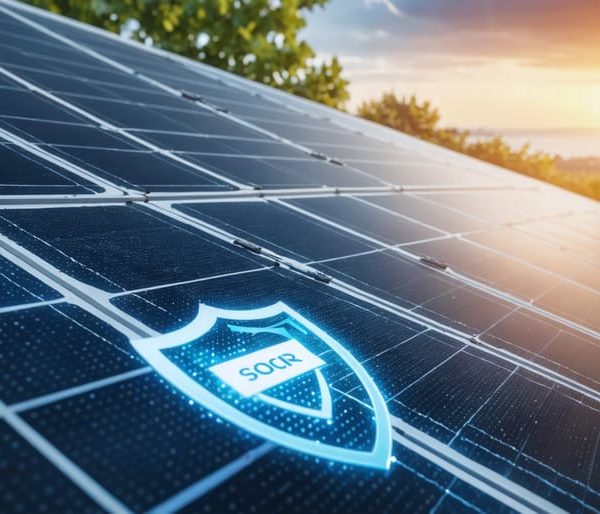Solar PPA Programs: Cut Your Energy Bills Without Buying Panels
Solar Power Purchase Agreements (PPAs) revolutionize how homeowners access clean energy, offering a zero-upfront-cost path to installing residential solar panels. Under this innovative financing model, a solar provider installs, owns, and maintains the system on your property while you purchase the generated electricity at a predetermined, often lower rate than utility prices.
Think of a PPA as subscribing to solar power rather than buying the hardware – you get all the benefits of renewable energy without the responsibilities of ownership. For budget-conscious homeowners seeking to reduce their carbon footprint and stabilize energy costs, PPAs remove traditional barriers to solar adoption by eliminating initial investment requirements and system maintenance concerns.
This arrangement typically saves homeowners 10-30% on monthly electricity bills while providing predictable energy rates for 20-25 years. As utility prices continue rising nationwide, PPAs offer an increasingly attractive path to sustainable, affordable power generation.
How Solar PPAs Transform Home Energy Costs
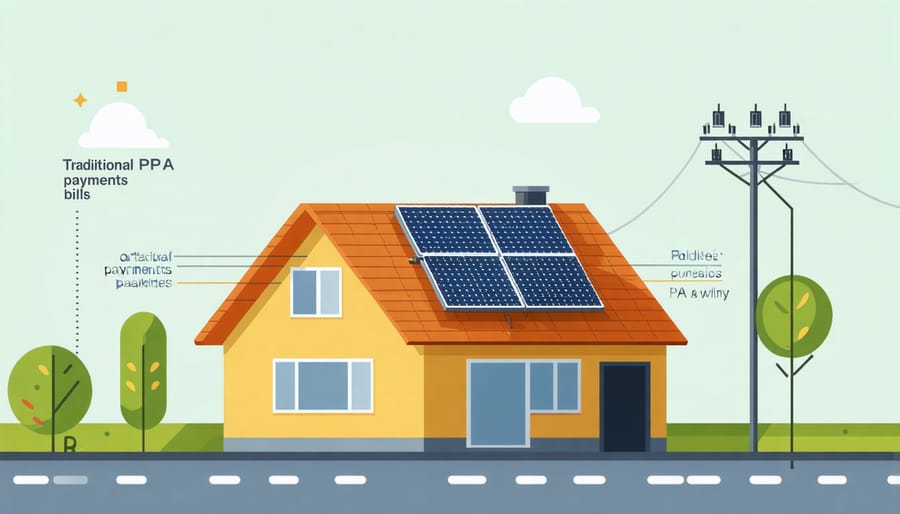
Zero Upfront Investment
One of the most attractive features of a solar PPA is that you can start generating clean energy without any upfront costs. Unlike traditional solar installations that require significant initial investment, a PPA allows you to go solar by simply agreeing to purchase the power generated by the system. The solar company takes care of everything – from installation and equipment costs to maintenance and repairs.
Think of it like renting your roof space to a solar company. They install and maintain the solar panels at their expense, and you only pay for the electricity produced, typically at a rate lower than your current utility bills. This arrangement makes solar energy accessible to homeowners who may not have the savings or desire to purchase a system outright.
The zero-down approach eliminates financial barriers that might otherwise prevent you from switching to solar power. You’ll start saving on your energy bills from day one, and because the solar company handles all maintenance, you won’t face any unexpected repair costs throughout the agreement term.
Predictable Energy Rates
One of the most compelling advantages of a solar PPA is the predictability it brings to your energy costs. Unlike traditional utility rates that can fluctuate dramatically based on market conditions, PPAs typically offer fixed rates that increase by a small, predetermined percentage each year – usually between 2-3%. This escalator rate is often lower than historical utility price increases, which have averaged 4-5% annually over the past decade.
With a PPA, you’ll know exactly what you’ll pay for solar electricity not just next month, but for the entire duration of your agreement, which typically runs 20-25 years. This predictability makes budgeting easier and protects you from unexpected spikes in energy costs. For example, if your initial PPA rate is $0.12 per kWh with a 2.5% annual escalator, you can calculate your exact energy costs for any given year of the agreement.
Many homeowners and businesses find that their PPA rates start below their current utility rates, delivering immediate savings from day one while providing long-term protection against rising energy costs.
Is a Solar PPA Right for Your Home?
Property Requirements
To qualify for a solar PPA program, your property needs to meet specific requirements to ensure optimal energy production and system performance. First and foremost, your property must have optimal roof conditions including adequate sun exposure, proper orientation, and structural integrity to support solar panels.
Your roof should receive direct sunlight for at least 4-6 hours daily, ideally during peak sun hours. South-facing roofs are typically preferred, though east and west-facing surfaces can also work effectively. The roof’s pitch should be between 15 and 40 degrees for maximum efficiency.
The available roof space must be sufficient to accommodate enough solar panels to meet your energy needs. Generally, you’ll need about 100 square feet of roof space for every 1 kW of solar capacity. The roof should be in good condition and have at least 10 years of life remaining, as most PPAs run for 20-25 years.
Location requirements include being in a state that allows PPAs and having suitable local zoning regulations. Your property should also be free from excessive shade from trees, buildings, or other obstacles that could reduce solar generation. Some providers may require a minimum credit score and proof of homeownership or property rights to qualify for their PPA programs.
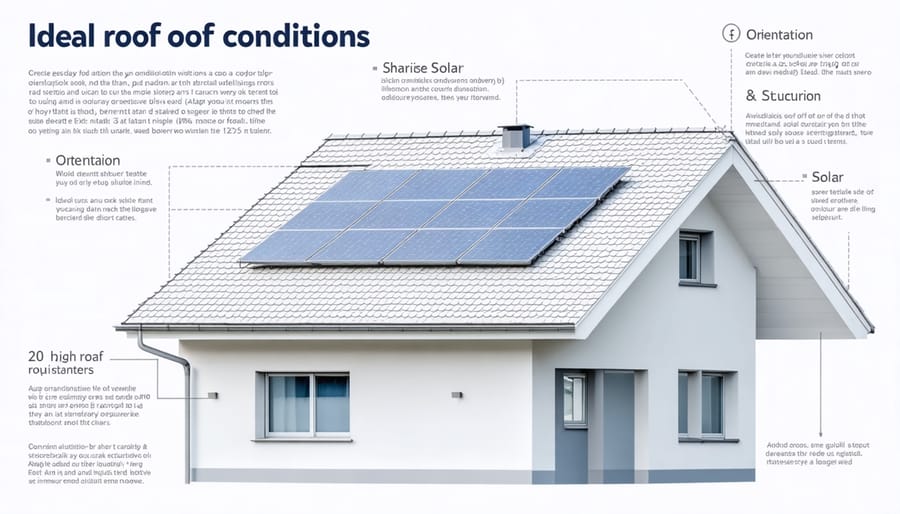
Financial Considerations
When considering a solar PPA, credit requirements are typically less stringent than traditional solar loans or leases. Most PPA providers look for a credit score of 650 or higher, making solar more accessible to a broader range of homeowners. However, it’s essential to understand the long-term financial implications before signing an agreement.
The primary financial benefit is zero upfront costs, allowing you to start saving on electricity bills immediately. You’ll pay only for the power your system generates, usually at a rate 10-30% lower than your current utility prices. The PPA rate structure can vary, with some agreements including a fixed rate while others may have an annual escalator of 2-3%.
Consider your long-term plans for the property, as PPAs typically run for 20-25 years. While this provides predictable energy costs, it may affect your home’s resale value. Some buyers might see the solar system as an asset, while others could view the long-term agreement as a liability.
Keep in mind that tax incentives and rebates usually go to the PPA provider rather than you. However, this is reflected in your lower power rates. It’s advisable to compare multiple PPA offers and carefully review escalator clauses, buyout options, and performance guarantees before making a decision.
PPA vs Other Solar Options
Cost Comparison
When comparing solar financing options, PPAs typically offer significant savings over traditional utility rates. For a typical residential installation, homeowners can expect to save 20-30% on their monthly electricity costs through a PPA, with zero upfront investment required.
Let’s break down the numbers: While purchasing a solar system outright might cost $15,000-$25,000, PPA customers pay only for the power they use at a predetermined rate. For example, if your current utility rate is $0.15 per kWh, a PPA might offer electricity at $0.11 per kWh, creating immediate savings from day one.
Over a 20-year PPA term, many households save $10,000-$30,000 on electricity costs, depending on their location and energy consumption. The PPA provider handles all maintenance and repairs, which would otherwise cost $2,000-$3,000 over the system’s lifetime.
Annual escalator rates in PPAs typically range from 2-3%, compared to historical utility rate increases of 3-5% annually. This predictable pricing structure helps protect against future utility rate hikes while maintaining consistent savings throughout the agreement term.
Some PPAs also offer performance guarantees, ensuring you only pay for the electricity actually produced, adding another layer of financial security to your investment.
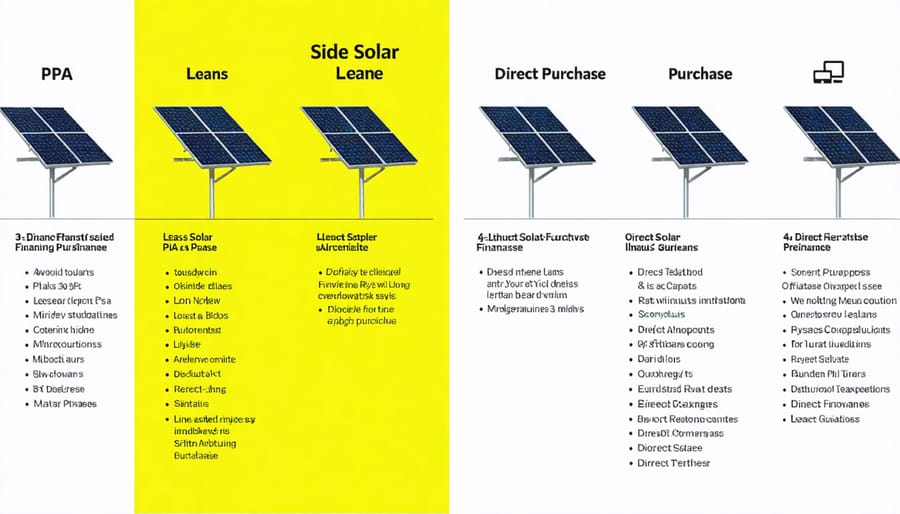
Maintenance and Warranty Coverage
Under a solar PPA, maintenance responsibilities typically fall on the solar provider, offering homeowners peace of mind throughout the agreement term. The provider handles all necessary repairs, replacements, and routine maintenance to ensure optimal system performance. This includes regular inspections, cleaning, and addressing any technical issues that may arise.
Most PPA agreements include comprehensive warranty coverage for the entire duration of the contract, which usually spans 20-25 years. This warranty typically covers equipment defects, performance guarantees, and workmanship. If the system underperforms, the provider is responsible for fixing the issue or compensating you for the shortfall in expected energy production.
The performance guarantee is particularly valuable, as it ensures your solar system generates the promised amount of electricity. If production falls below guaranteed levels, many providers will reimburse you for the difference or fix the underlying issue at no additional cost.
While you won’t need to worry about maintenance costs, it’s important to read your PPA agreement carefully to understand specific terms, including response times for repairs and any circumstances that might affect warranty coverage. Your only responsibility is typically to keep the panels free from obvious obstructions and report any issues promptly to your provider.
Taking the Next Step
Ready to move forward with a solar PPA? Here’s your step-by-step guide to finding the right provider and making an informed decision.
Start by researching multiple PPA providers in your area. Look for companies with strong track records, positive customer reviews, and necessary certifications. Request quotes from at least three different providers to compare offers effectively.
When evaluating proposals, pay attention to these key factors:
– The proposed rate per kilowatt-hour and annual escalator rate
– Contract length and terms
– System maintenance responsibilities
– Performance guarantees
– End-of-contract options
– Company’s financial stability
Don’t hesitate to ask questions about anything unclear in the proposal. Reputable providers will gladly explain their terms and conditions. Consider requesting references from existing customers and, if possible, visit installations they’ve completed.
Before signing, have a qualified attorney review the contract. Pay special attention to:
– Early termination provisions
– Property sale clauses
– Performance guarantees
– System removal terms
– Maintenance schedules
– Insurance requirements
Remember to check if your roof needs repairs before installation, as it’s easier to address these issues beforehand. Also, verify that your local utility allows PPAs and understand their specific interconnection requirements.
Take your time with this decision – a solar PPA is a long-term commitment that can significantly impact your energy costs and property value.
Solar PPAs offer a compelling pathway to embrace clean energy without the burden of upfront costs. By understanding the benefits of zero-down installation, predictable energy rates, and professional system maintenance, you can make an informed decision about your energy future. Whether you’re a homeowner looking to reduce utility bills or a business aiming to enhance sustainability, PPAs provide a practical solution that aligns with both environmental and financial goals. Take the first step today by requesting a solar assessment and exploring how a PPA can transform your energy consumption while contributing to a greener planet. Remember, every solar installation helps reduce carbon emissions and builds a more sustainable future for generations to come.

